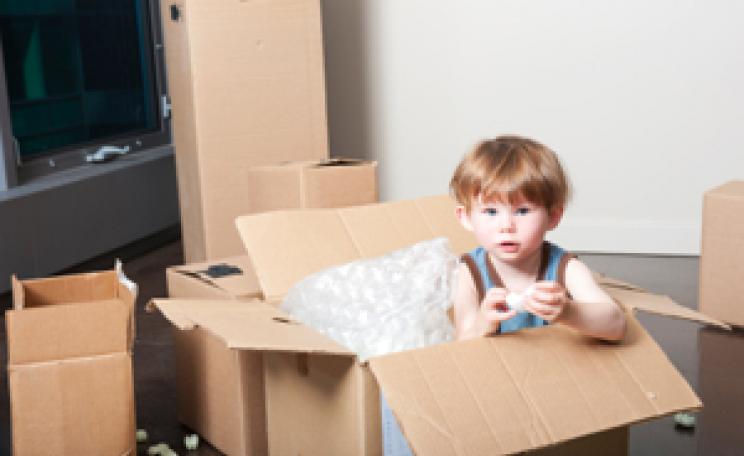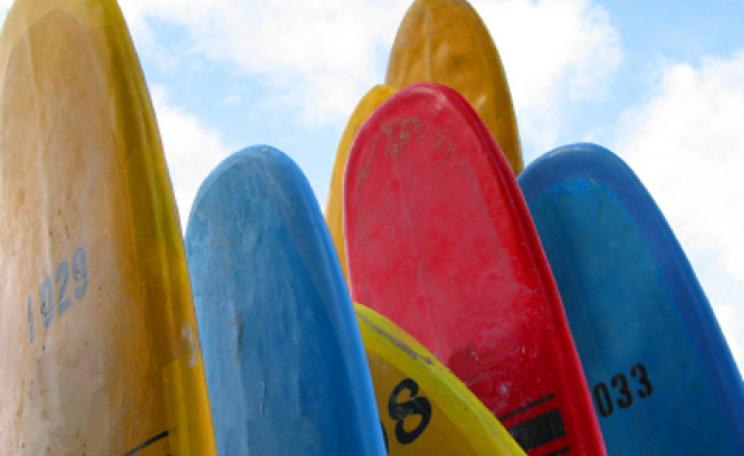The Trouble With Dragons by Debi Gliori (£5.99, Bloomsbury)
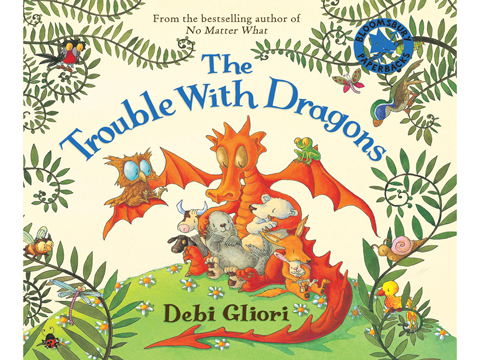 Award winning author and illustrator Debi Gliori has used the tools of her trade to tackle an issue close to her heart: ecological problems. In writing The Trouble With Dragons, Gliori’s aim was to stimulate conversation about conservation and help little ones to start thinking green. In this poignant tale, the planet is populated by careless, selfish wasteful dragons, who care nothing for pollution, chop down the trees and eat up all the food. It’s only once they realise that they are devastating the world they were born into, and that they themselves face an existence without wildlife, that they actually start to think twice about what they’re doing.
Award winning author and illustrator Debi Gliori has used the tools of her trade to tackle an issue close to her heart: ecological problems. In writing The Trouble With Dragons, Gliori’s aim was to stimulate conversation about conservation and help little ones to start thinking green. In this poignant tale, the planet is populated by careless, selfish wasteful dragons, who care nothing for pollution, chop down the trees and eat up all the food. It’s only once they realise that they are devastating the world they were born into, and that they themselves face an existence without wildlife, that they actually start to think twice about what they’re doing.
Tackling big issues is a hard task for children’s authors but Gilori strips back the complexity, and makes these issues accessible and surprisingly fun. Written in verse form, the rhymes ensure that younger children will find it easy to start joining in. The illustrations are delightful and will appeal to boys and girls alike. The book itself has been produced with the environment in mind. It has been printed using vegetable inks on FSC certified paper, incorporating recycled material.
Hey! What’s That Nasty Whiff? by Julia Jarman and Garry  Parsons (£6.99, Scholastic)
Parsons (£6.99, Scholastic)
The protagonist in this story is an extraordinarily altruistic hyena who’s fed-up of cleaning up after all the other animals, none of which ever lend a hand. Encouraged by the somewhat less appealing vulture she takes a well-deserved and havoc-provoking rest. At first nobody notices when the under-appreciated hyena goes on strike but in time, it dawns on the other animals that saving the planet is a team sport. They even sign a pledge to confirm their commitment.
This is an exceptionally original story with a succinct message: if you don’t clean up your act, this world will smell of poo! The humorous illustrations beautifully complement the witty, rhyming text that will have children howling with laughter.
The Wombles to the Rescue and The Wombles Go Round the World by Elizabeth Beresford (£4.99 and £5.99 respectively, Bloomsbury)
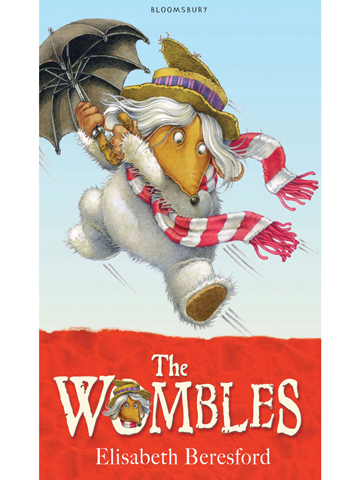 The Wombles with all their recycling and re-using were perhaps the first characters for children with eco-warrior credentials. And so it’s beyond pleasing to see that more than 40 years since they were initially created by Elisabeth Beresford, Bloomsbury Children’s Books have republished all six titles with fresh new illustrations by Nick Price. This charming series is as relevant for young readers today as it was all those years ago.
The Wombles with all their recycling and re-using were perhaps the first characters for children with eco-warrior credentials. And so it’s beyond pleasing to see that more than 40 years since they were initially created by Elisabeth Beresford, Bloomsbury Children’s Books have republished all six titles with fresh new illustrations by Nick Price. This charming series is as relevant for young readers today as it was all those years ago.
The Wombles to the Rescue: The Wombles have just returned to their burrow on Wimbledon Common. They had been forced to leave because heavy lorries thundering up and down the nearby road threatened to make the roof of the burrow cave in. However, now that the Wombles are safely back, there is another problem they have to contend with. It seems that the humans have realised they have an energy crisis and are throwing away much less. Incredibly clever and surprisingly ‘now'.
The Wombles Go Round the World: Great Uncle Bulgaria loves relating the history of the Womble clans to the younger Wombles. But to his great disappointment he’s noticed the young Wombles don’t really share his passion for their history. In time Great Uncle Bulgaria decides to take action and demonstrate to these youngsters how wonderful – and amazingly international – the Wombles’ history is. Tobermory invents some impressively eco-friendly air balloons to travel in and Orinoco, Bungo, Tomsk and Wellington are sent variously to America, Tibet and Australia. This is an action-packed adventure in which the Wombles experience more excitement than ever before.
Horrible Science: Wasted World by Nick Arnold and Tony DeSaulles (£5.99, Scholastic)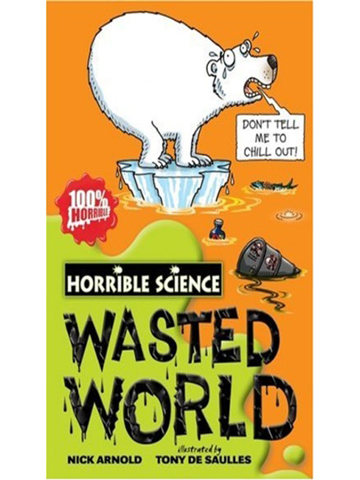
The Horrible Science books (a spin-off from Horrible Histories) boast fantastic fact files, mind-stretching quizzes, gruesome experiments and cool cartoons; all of which help meet the goal of making science fun. This is the first Horrible Science book to tackle environmental issues. Exploring the issues of global warming and climate change, it approaches questions such as which is the deadliest of toxic waste? What exactly are greenhouse gases? How much longer have humans got on this planet? Arnold plunges deep into alarming facts; if the planet were just three degrees warmer the Artic would be ice-less being a typical example. This book has a high utility value, giving youngsters clear guidance on conserving energy and ultimately on how to become conscientious consumers.
Ravenwood by Andrew Peters (£6.99, Chicken House Publishing)
 Ark, a plumber’s boy, lives in a stunningly dramatic world carved out of the giant branches of a vast canopy of trees. He overhears a plot by a callous superpower to cull the wood from his beloved forest island, now scarcer and more precious than gold. Ark is plunged into danger; he must race from the treetops to the darkest, deepest roots of Ravenwood in order to save his home and people. This story is clearly born out of Peters’ obvious love of trees and knowledge of their significance and value. Incredibly ‘boy friendly’, fast paced, and enjoyable, yet simultaneously though provoking and with a cautionary moral.
Ark, a plumber’s boy, lives in a stunningly dramatic world carved out of the giant branches of a vast canopy of trees. He overhears a plot by a callous superpower to cull the wood from his beloved forest island, now scarcer and more precious than gold. Ark is plunged into danger; he must race from the treetops to the darkest, deepest roots of Ravenwood in order to save his home and people. This story is clearly born out of Peters’ obvious love of trees and knowledge of their significance and value. Incredibly ‘boy friendly’, fast paced, and enjoyable, yet simultaneously though provoking and with a cautionary moral.
Phoebe Doyle is an education and parenting journalist. She blogs at www.tremendouslytwo.blogspot.com
| READ MORE... | |
 |
REVIEW The Gaia Warriors by Nicola Davies An accessible, enjoyable book on climate change for the next generation of eco-warriors. Contributors include James Lovelock |
 |
GREEN LIVING How to garden with kids Tips for passing on green fingers, and a taste for vegetables, to your sprogs |
 |
GREEN LIVING Top 10…Eco-friendly half term breaks Try something new during the half term break, whether it’s wolf tracking in Sweden or surfing in Wales. Whatever your budget, likes or dislikes, we’ve got an eco-friendly family trip for you |
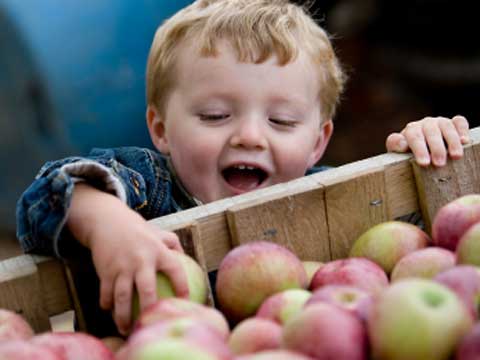 |
GREEN LIVING Six ways to teach kids to value community life This extract from the new book Homemade Kids offers some inspirational ways you and your kids can get stuck back into local life |
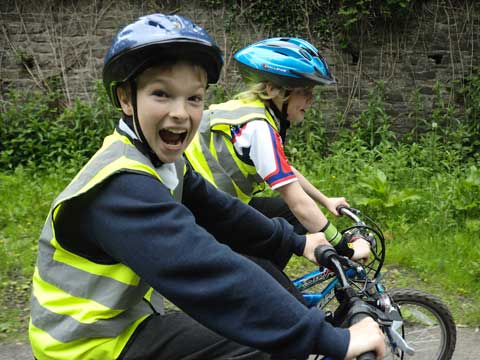 |
HOW TO MAKE A DIFFERENCE School travel plans: how to successfully get your kids walking and cycling to school Cutting the car out of the school run has health, social and environmental benefits for pupils, parents and teachers. Here's our guide to making it happen... |






